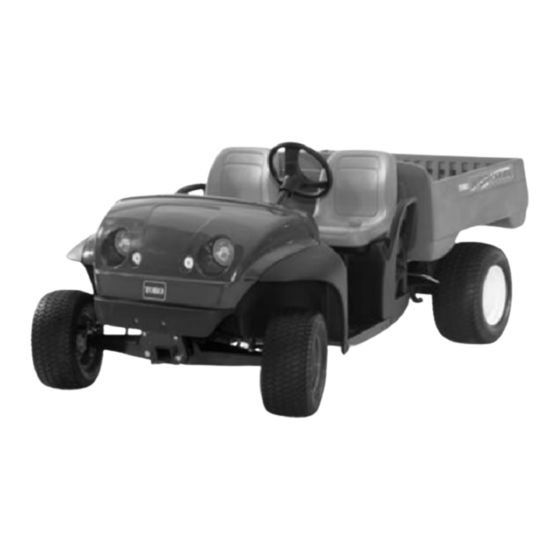
Table of Contents
Advertisement
Preface
The purpose of this publication is to provide the service
technician with information for troubleshooting, testing
and repair of major systems and components on the
Workman e2050 and e2065.
REFER TO THE OPERATOR'S MANUAL FOR OPER-
ATING, MAINTENANCE AND ADJUSTMENT IN-
STRUCTIONS. Space is provided in Chapter 2 of this
book to insert the Operator's Manuals and Parts Cata-
logs for your machine. Replacement Operator's Manu-
als are available on the Internet at www.toro.com.
The Toro Company reserves the right to change product
specifications or this publication without notice.
Workman
E The Toro Company - - 2004, 2006, 2007, 2011
Service Manual
e2050 & e2065
R
This safety symbol means DANGER, WARNING
or CAUTION, PERSONAL SAFETY INSTRUC-
TION. When you see this symbol, carefully read
the instructions that follow. Failure to obey the
instructions may result in personal injury.
NOTE: A NOTE will give general information about the
correct operation, maintenance, service, testing or re-
pair of the machine.
IMPORTANT: The IMPORTANT notice will give im-
portant instructions which must be followed to pre-
vent damage to systems or components on the
machine.
Part No. 04127SL (Rev. D)
Advertisement
Chapters
Table of Contents
Troubleshooting















Need help?
Do you have a question about the WorkmanR e2050 and is the answer not in the manual?
Questions and answers